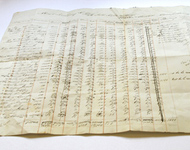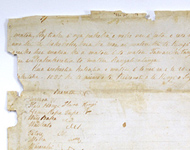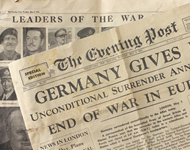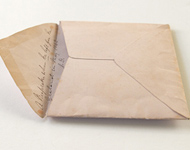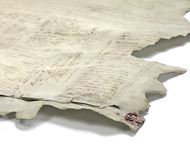Replicas
Since creating important replicas of the Treaty of Waitangi documents with New Zealand Micrographic Services in 2005, Daniel and NZMS have been gone on to make replicas of other historical documents, including the 1835 Declaration on Independence of the United Tribes of New Zealand, and the Malone Documents for Sir Peter Jackson's Great War Ehibition.
|
|
|
|
|
|
|
"It is surprising what a difference a bit of contouring, creasing, and distressing can make, turning a flat print into a striking replica. Time and time again I have found that small details make for an amazing transformation, resulting in pieces that look so real, it surprises even me!
NZMS captures the images of the originals either by photography or by scanning on their flatbed Cruse scanner. Depending on the nature of the piece, I may also request scans under raking light in order to show where and in which direction creases and folds occur in the document.
Sometimes it is necessary for me to digitally 'unfold' and 'flatten' a document before printing - for example where two layers are visible at the same time, or a front folds over to reveal a back, or two pieces overlap, or where a fold or a join doubles back over a surface: it would look wrong to see both a real fold and a 'printed' fold.
NZMS then makes the necessary prints, and hands them to me to convert them into replicas.
The edges come first. Whether they're cut straight, or torn, or rat-eaten, or conserved, I re-create the look, by cutting or tearing, and if necessary, abrading. The edges also need to be painted, to hide the white line of the replica paper. I match the paint to the colour of the document, varying it as the edge changes, with its local stains and aging. Tears, punctures and other piercings get the same treatment. Painting of the reverse side is sometimes necessary too, where paper edges curl, or are permanently dog-eared, showing the back of a page.
General crumpling by hand is next, if required, to match the condition of the subject.
Lastly, with the aid of images under raking light from different directions, I apply the same creases as the original. There are usually more creases than are first apparent, but the replica needs them all in order to get the right look. Any general contours and curves are also worked into the paper, repeating any bends, rolled edges and dog-ears. These last few operations, imparting the three-dimensional qualities to the piece, are very satisfying: you can see the print 'come to life' before your very eyes." - DR
Below are images from some of these replica projects.
Historical Insurance Document
A significant family heirloom of an early insurance policy document for a woollen and worsted manufacturing company in Manchester dating from the early 1870s.

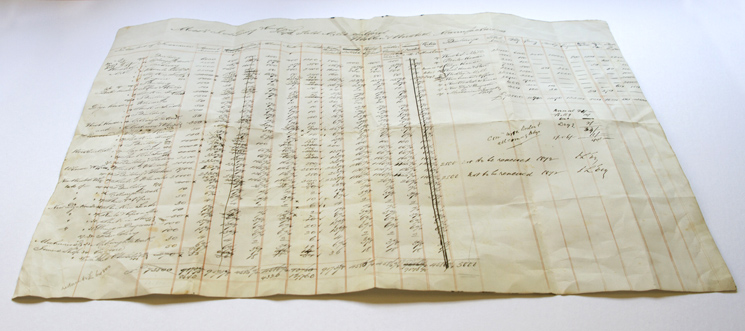
1835 Declaration of Independence of the United Tribes of New Zealand - He Whakaputanga

|
Daniel created replicas of both pages of the 1835 Declaration of Independence of the United Tribes of New Zealand, for Archives New Zealand, for display in the National Library. Having replicas means that both sides of the document can be viewed. |
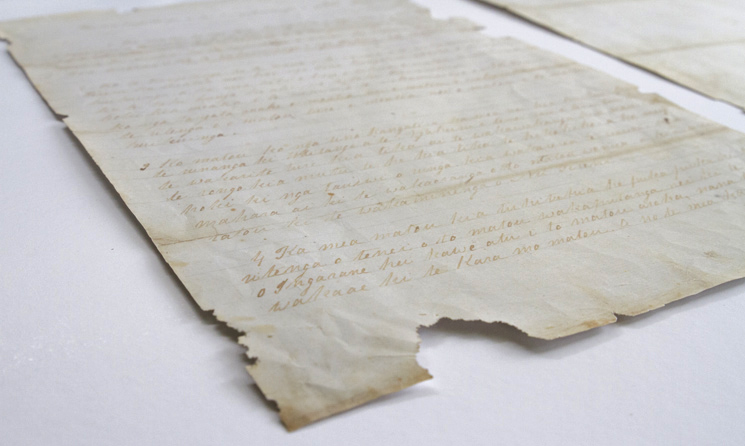
Evening Post: The End of WWII
Replicas of the Evening Post Special Edition of the 8th of May, 1945, marking the end of WWII.
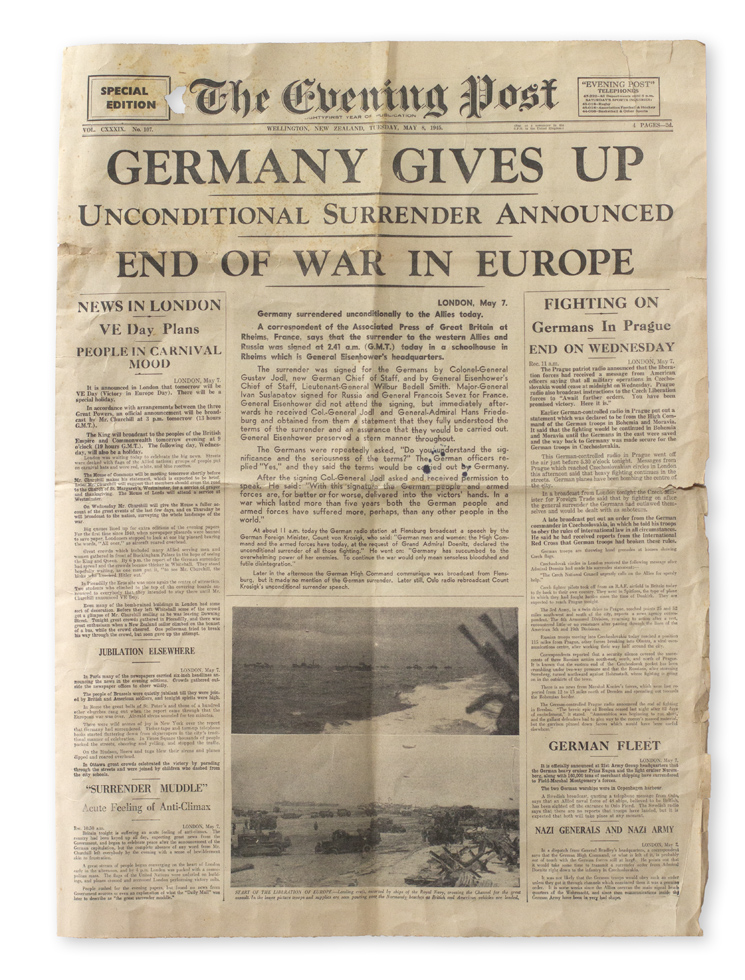
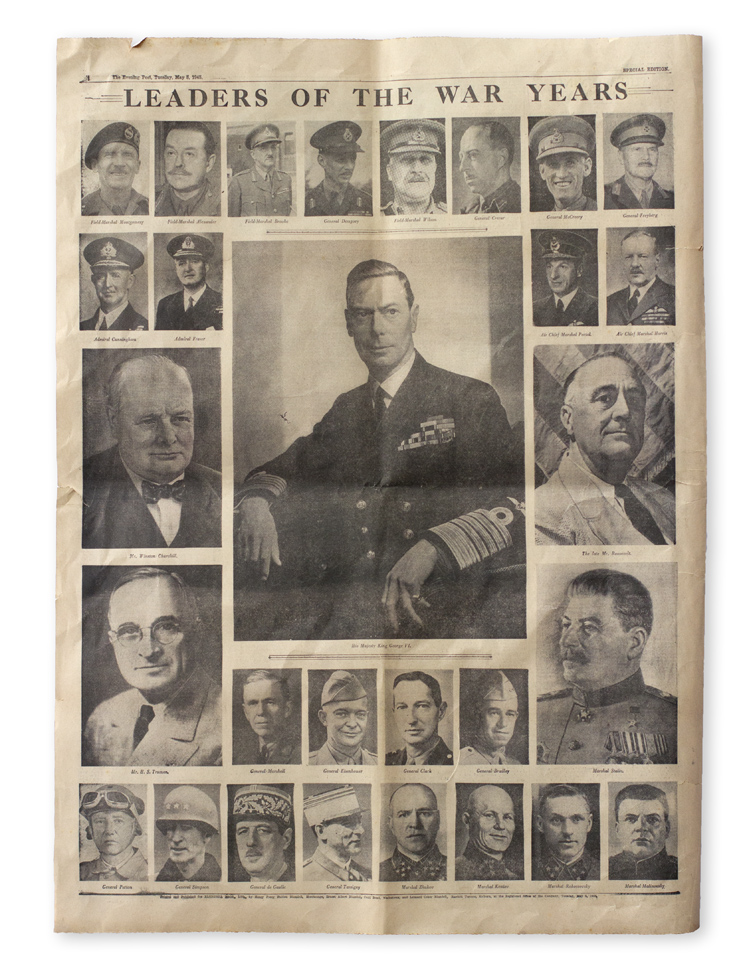
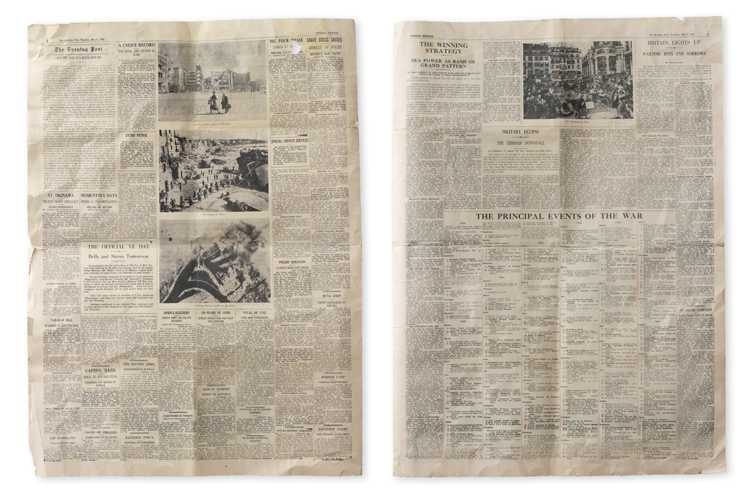
Old Envelope

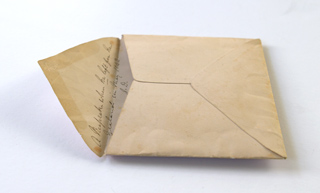
|
A precious family heirloom. A couple of challenges with this replica... The original was in two pieces - the envelope flap had become separated from the main part - so, starting with the scans from NZMS, I had to digitally 'repair' the envelope back into one piece (front and back, separately, but matching). I also had to digitally 'disassemble' the envelope, splaying it out to its flat shape, using the scans from both sides of the original to create the outer 'side', and using parts of the scans to digitally re-create the inner 'side'. After some trial and error to find the perfect print regristration, the envelope was printed double-sided onto a single sheet of paper, cut to shape, and physically re-assembled into envelope form. So there was more to this replica than meets the eye at first glance! |

